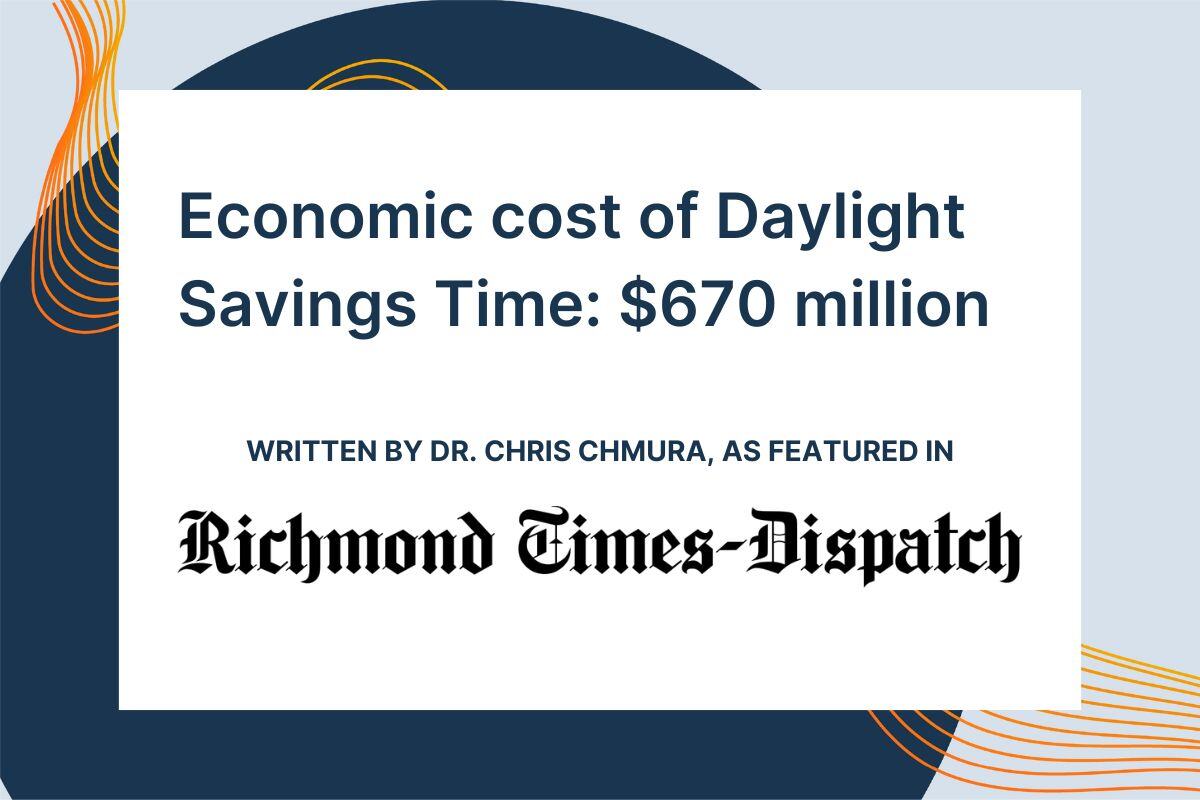Economic cost of Daylight Savings Time: $670 million

By Chris Chmura |
Businesses, particularly retailers involved with sports and recreation, have historically argued for extending daylight savings time. Medical doctors, on the other hand, generally argue against it.
Peer-reviewed studies have found that the loss of sleep after the change to DST in March each year is associated with an increase in heart attacks, strokes, workplace injuries (in specific industries), and traffic accidents.
Two of our economists at Chmura Economics & Analytics—Jonathan Cox and Mike Chmura—used the findings of the peer-reviewed studies to estimate the economic cost of DST for each metropolitan statistical area in the nation based on the industry mix and historical trends.
Based on their analysis, DST comes with an estimated economic cost of just over $670 million throughout all metropolitan statistical areas in the nation.
Metro areas with a higher percentage of construction and manufacturing jobs had a larger economic loss due to workplace injuries. Based on previous studies, we assumed the rate of heart attack increases by 5% during the first week after Spring DST and the rate of stroke increases by 8% the first two days after Spring DST. Based on a recent study, traffic accidents are assumed to increase by 6% the day following DST.
The economic cost estimates include the direct cost of an injury or accident as well as the indirect cost associated with an incident including lost wages and productivity due to injury. In circumstances when loss of life occurred due to a heart attack, stroke, workplace injury or traffic accident, the costs of increased fatalities were estimated by using an official “Value of a Statistical Life” (VSL) estimate, a method commonly used by federal agencies to examine the cost-benefit relationship of new policies. Readers that are interested in the full methodology for estimating the economic cost of losing sleep due to DST, can view it online at https://chmura.com/blog/dst
The results show Texarkana, Texas-Arkansas will likely have the highest per capita cost from DST at $7.76 among the 386 metro areas in the nation. It is followed by Joplin, Missouri-Kansas and Fayetteville-Springdale-Rogers, Arkansas.
By comparison, the Richmond MSA is ranked 209 at a per capita cost $2.47, which is below the national average of $2.73. Washington D.C. is ranked 358 and Virginia Beach is 147 at $2.75.
This is not the first time an attempt has been made to eliminate the time change. In March 2022, the Senate overwhelmingly passed The Sunshine Protection Act that made DST permanent and would have brought more light to the evening hours of winter days. It never made it to the floor of the house for a vote.
Perhaps that is because there is no agreement on whether to stick with DST or standard time. According to some medical doctors, standard time is better for health and safety because it aligns more appropriately with our internal clocks that help us fall asleep and wake up.
President-elect Trump may find it harder to end this policy than expected.
This column was originally published at Richmond Times Dispatch.
Subscribe to the Weekly Economic Update
Subscribe to the Weekly Economic Update and get news delivered straight to your inbox.